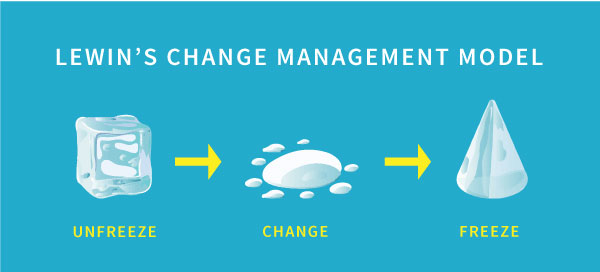Communicating the New Business Process
By: KHA Consulting Team
The following is part four of a four-part series on business processes, including the need for clarity, proper design, appropriate communication, and commensurate monitoring.

I remember a time when a construction company missed out on a huge opportunity because their credit approval process hinged on one person with limited to no oversight. The result: The buyer went elsewhere because they did not feel valued – all based on the credit approval process, both in its administration and expediency.
At KHA, we help our clients out of these kinds of situations by advising successful business management processes. We begin our conversation with the question, “How have you designed, communicated and monitored your processes?” Please see last month’s article about the first step in process management, [the need for process clarity], where I discussed the need for clarity first before we can focus on process design.
If business process design is done right, we can eliminate company waste, internal control weaknesses and mediocrity across the organization. Process design is perhaps the most critical phase, as it all starts here.

When entering the process design phase, you may be tempted to think it would be easier to have something to start with and turn this project into a redesign. You would be wrong. A redesign is typically more difficult due to precedent that has been well cemented into the culture of the organization. For the rest of us who can only dream of starting a process design from scratch, we fall into the redesign bucket. This is what change management is all about, and if you have gone down this road before as a driver of the process redesign or as a participant, our sincere and heartfelt apologies go out to you.
Whether the process is from scratch or a redesign, both processes have three main stages: buy-in, comprehensive consideration of the current state and a well thought out future state. A good visual example of these states is Kurt Lewin’s Change Model.
OBTAINING BUY-IN
No process can change without a sense of urgency: why do you think people are so deadline motivated? Each of these redesign phases takes time, some more than others, and all those involved will certainly experience challenge, if not pain. From the CEO to the end-user, we must strive for clarity and obtain buy-in at every level to ensure the design, communication and monitoring of the process is commensurate to what is warranted. If we do not, we will be looking back on this as a fond memory where we learned how comical the workplace and its inhabitants can be.
MEASURING THE CURRENT STATE
“If it ain’t broke, don’t fix it.” Well, we are here, so it’s broke. But, how broke is it? Great question, and to answer it, we chart the current state. To identify what we are up against, we typically perform walkthroughs and map every step along the way. A walkthrough includes physically observing the current process being performed with the team at all levels and mapping each step. This is also a fantastic tool for obtaining buy-in, and the leader here must listen well. One of the more critical components here is the visual process map, such as those that can be drawn in Microsoft Visio. Most people learn visually, and, even those that do not, love pictures. This map also helps us physically chart suspected weak points, overlapping duties and even possible ways to rearrange the process to better suit team and company needs. Measuring the current state in such a visual manner is a key tool to use to stimulate discussion and obtain buy-in.
FUTURE STATE: MELTING THE PROCESS
We know the current state and have considered it completely; we now look to change the process and shape the future state. Yes, it is time to begin melting the process. We understand the existing process and have heard from key personnel, including those involved in performing and monitoring. The melting process helps us identify weaknesses in the process such as inefficiencies, internal control failures and bottlenecks. These deficiencies are usually impossible to pinpoint in a sea of words but tend to pop out in that visual process map tool. Who said picture books were not good for us?
FUTURE STATE: CHANGING THE PROCESS – FACILITATION
It is time to dream again. If this process could be everything we want it to be, what would it entail? We are reforming the process here, identifying the critical pieces that must be included. (Of note: a key mistake that can be made here is to design the new process without buy-in from the same teams we visited with to understand the current or preexisting process.) Collaborative whiteboard sessions here are helpful, and it is useful for the consultant or project manager to have ideas, but they must remain objective and flexible. Otherwise, the team can smell your premeditated agenda a mile away, and you will be losing credibility. This objective leader must be able to take the ideas good and bad and filter them while maintaining a feeling of involvement and inclusion from key constituents. It takes a special ability to be able to objectively arrive at the right answers, while still engaging and including key players. It is typically easier for an outside third-party to do this; they have less bias.
FUTURE STATE: REFREEZING THE NEW PROCESS
Alas, we converge on what the ideal process should be, based on the systems, people and needs involved. The new process is mapped and tested extensively. Once the team is comfortable with the new process, and they are comfortable with test results, the visual map should be used to document an accompanying narrative. This narrative provides commentary that can help solidify and clarify each intended action item; eliminate the wiggle room, you say? Documentation must be palatable and easy to understand for the end-user. If not, expect yourself to be back measuring the current state soon. The process has now been refrozen in the improved state. Depending on the context, it is time to get the necessary approvals and set a launch meeting.
We are ready for the next stage – to communicate the process. This will be covered in our next installment. Thank you for reading, and look forward to part three of this series on process communication next. We cannot wait!
KHA Management Consultants, the consulting wing of KHA Accountants, PLLC, based in Flower Mound, Texas, is always looking for key clients ready to take their business to the next level. If you have a desire to improve, take the first step toward success with the process experts, contact us at 972-221-2500.

